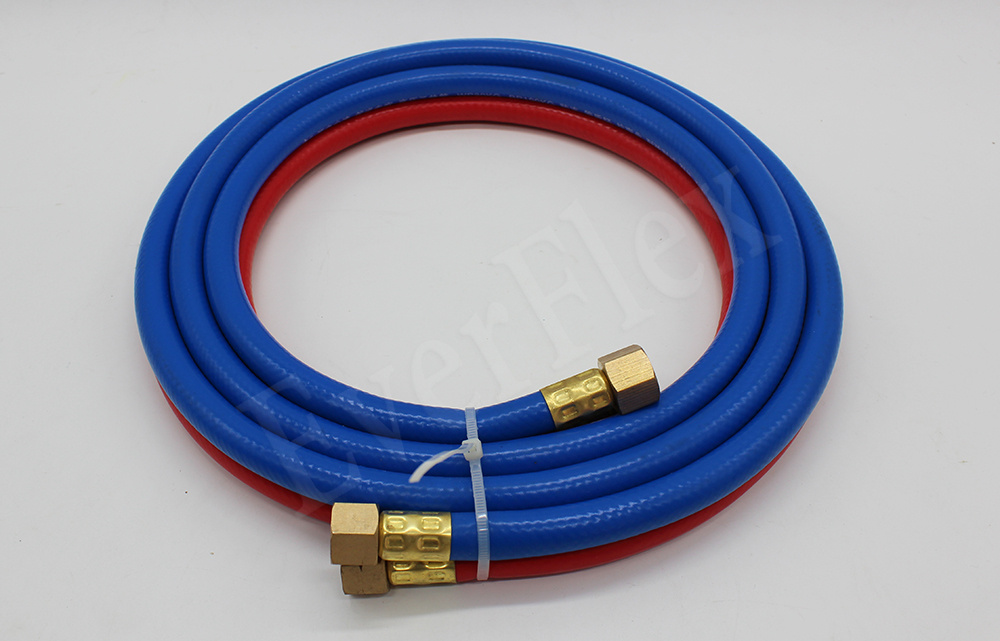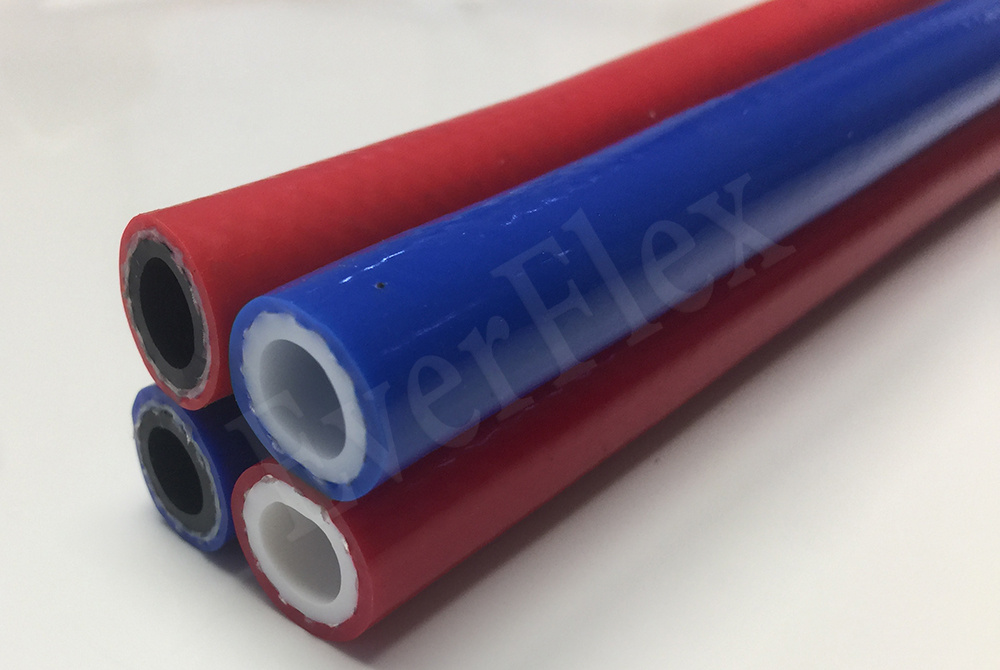Oxygen and acetylene hoses are essential welding hoses for welding work. As their names suggest, oxygen hoses deliver oxygen to support combustion, while acetylene hoses carry flammable gases like propane and acetylene. These oxy-acetylene hoses are critical components of any welding system, so their quality must be reliable. Welding itself is dangerous, too: gas leaks can pollute the air, and open flames could ignite gas tanks, causing severe fires and harm to operators. To stay safe, focus on the following key factors.
Regular Maintenance
Keep oxygen and acetylene hoses clean and free from damage. Protect twin hoses from rain, snow, and UV exposure, as these elements accelerate aging and shorten their lifespan. Avoid contact with acids, alkalis, oils, and other corrosive substances, which can degrade the hoses. Store them at temperatures between -15℃ and 40℃ and keep them at least 1 meter away from heat sources.
Pre-Use Cleaning
For new hoses, always blow out the talcum powder from the inner walls to prevent blockages in the welding torch. During use, avoid exposing hoses to external pressure or mechanical damage. Ensure you use compatible oxygen and acetylene hose fittings to maintain a secure seal.
Never Mix Gases
Never use an oxygen hose to clear blockages in an acetylene hose. Regularly check for leaks or blockages and address them immediately to prevent dangerous mixtures of oxygen and acetylene in the hoses. If a flashback occurs and fuel enters the oxygen hose, replace the hose entirely. Flashbacks can burn the inner tube, compromising safety-using a damaged hose puts you at serious risk.
By prioritizing regular maintenance, proper cleaning, and strict gas separation, you can ensure the safety and reliability of your oxygen and acetylene hoses, minimizing risks during welding operations. Always prioritize safety to avoid catastrophic failures.







